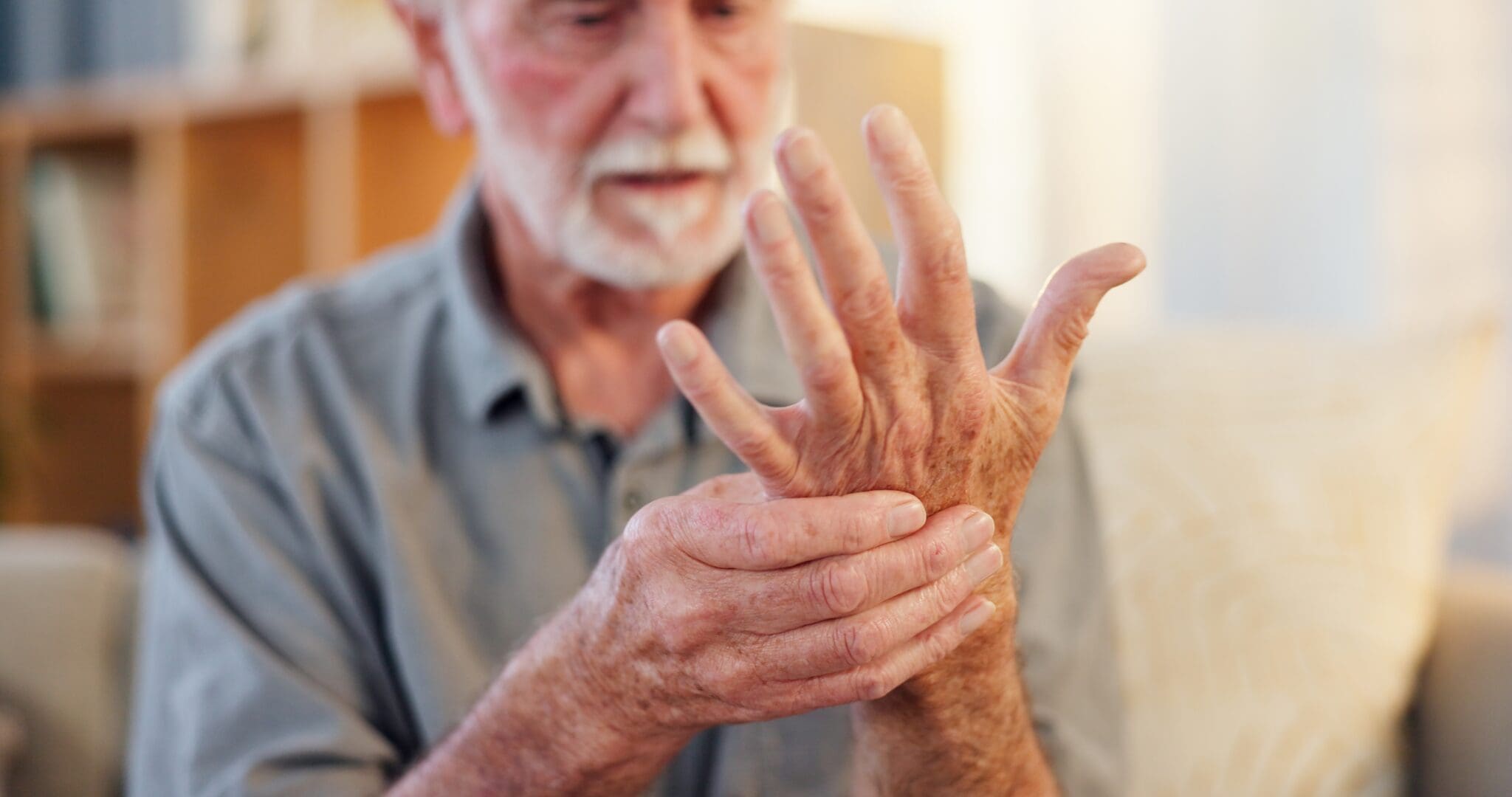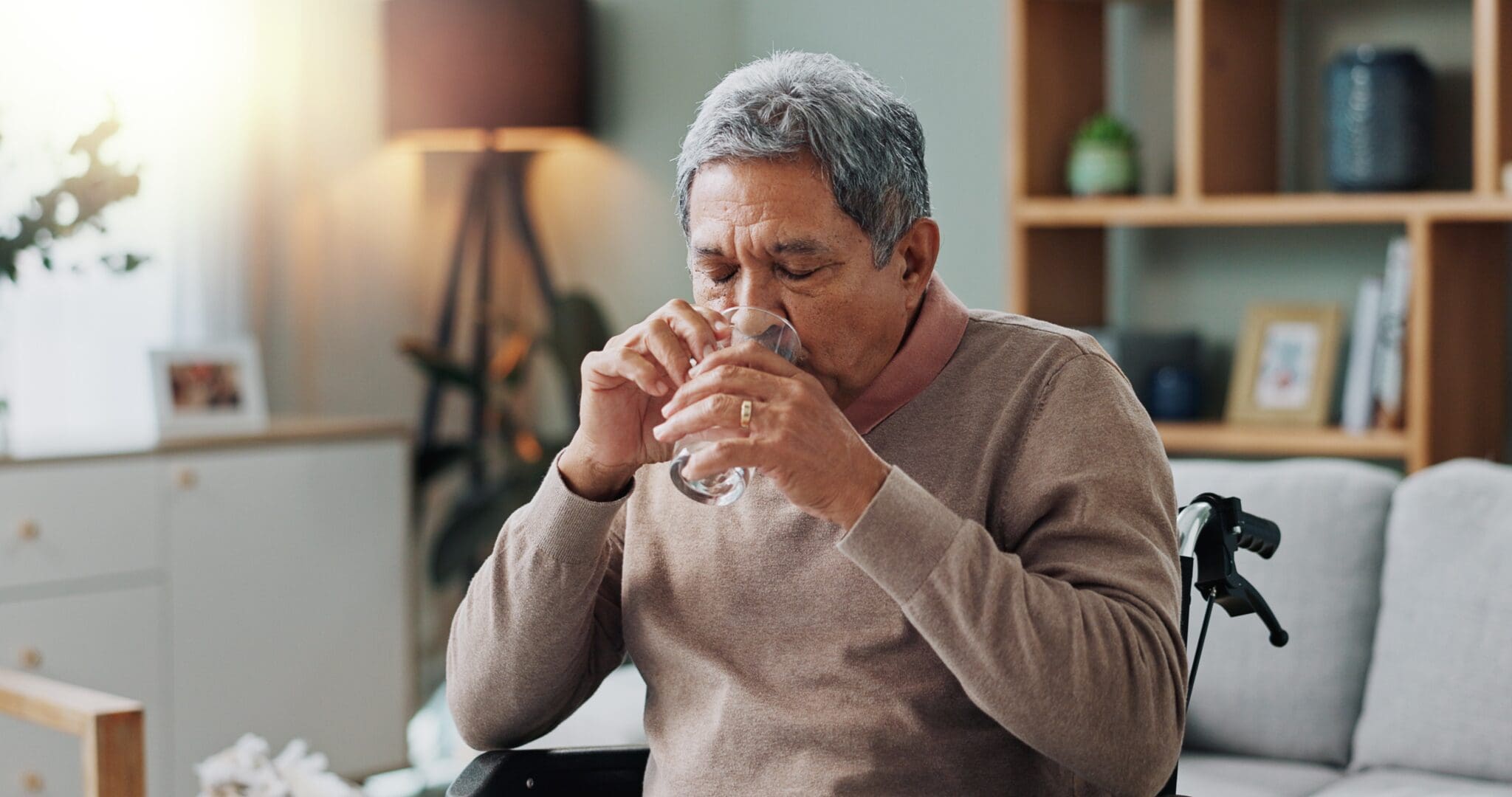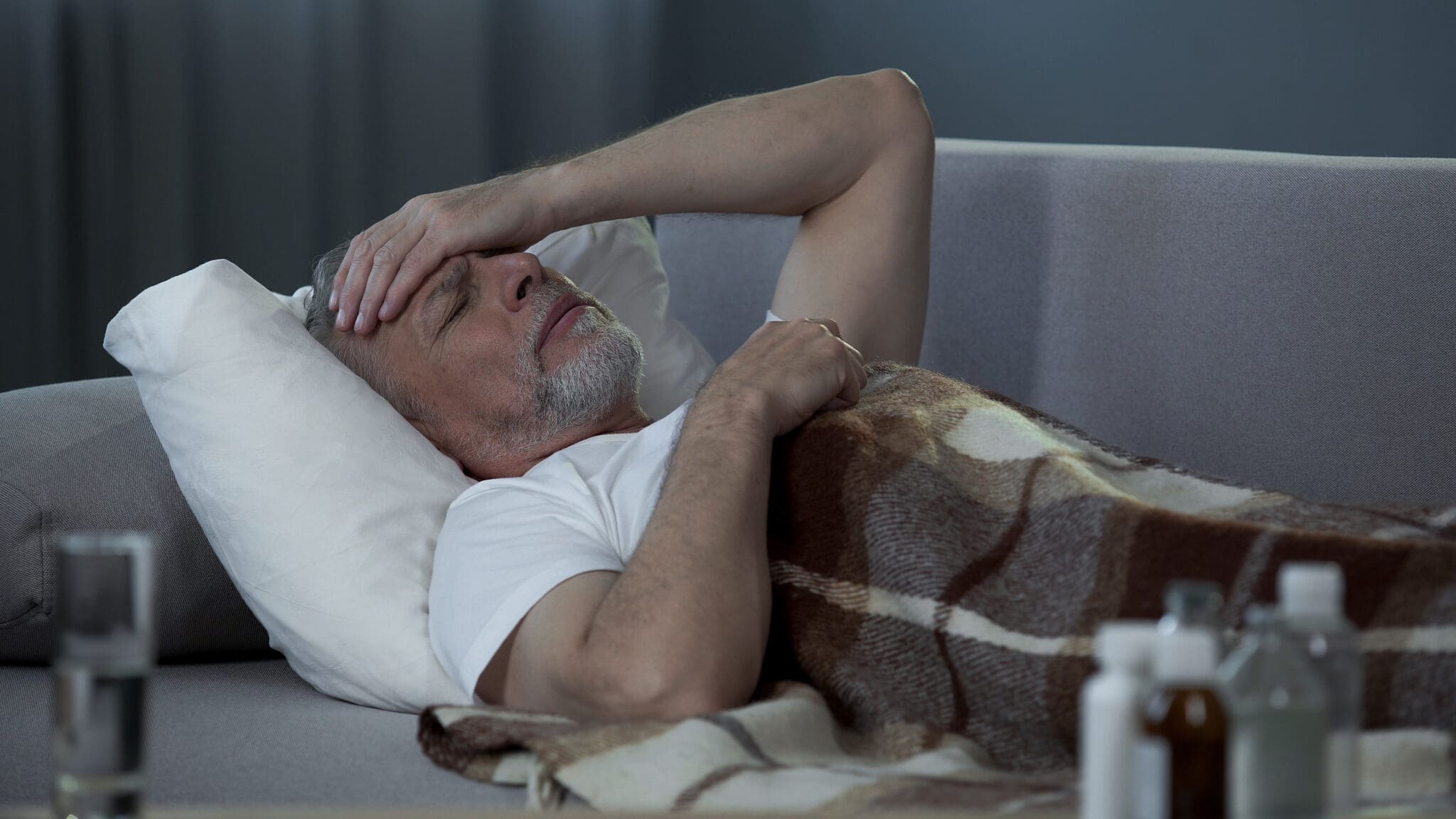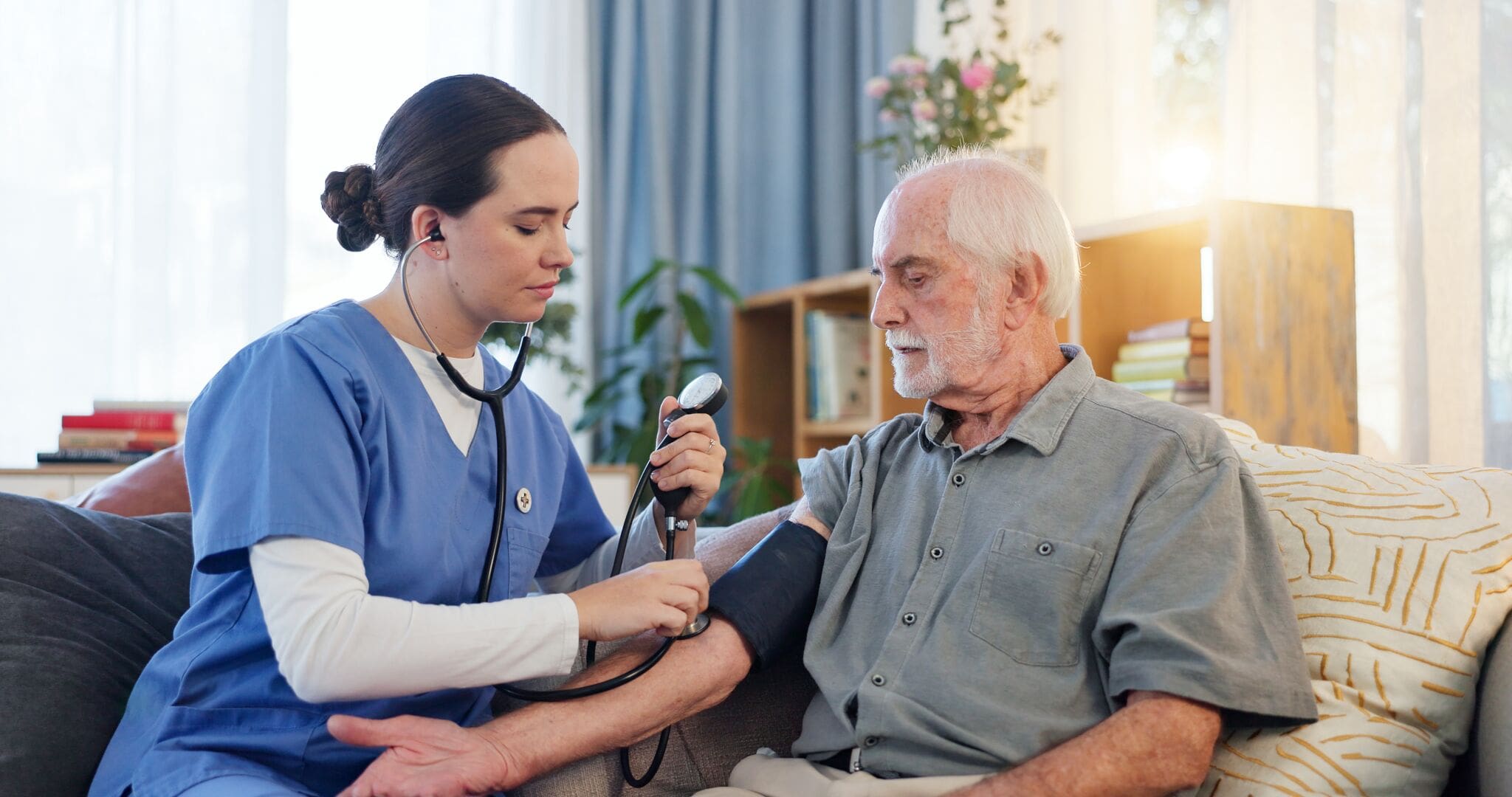In this article
What is Parkinson’s disease?
Parkinson’s disease is a degenerative condition that affects the brain. It can cause multiple health issues, including mobility problems, cognitive decline, sleep problems and pain. It is sometimes referred to as PD.
Parkinsonism is an umbrella term that is used to describe the symptoms of tremors, muscle rigidity and slow movement. Parkison’s disease or PD is the most common type of parkinsonism.
According to the World Health Organisation (WHO), the prevalence of Parkinson’s has doubled in the last 25 years. Global estimates in 2019 suggested that there were over 8.5 million people living with PD. PD can have a significant impact on people’s day to day life, causing ill health and disability.

The different types of Parkinson’s
The most common type of parkinsonism is called idiopathic Parkinson’s. The term ‘idiopathic’ refers to the cause being unknown. It may feel frustrating to receive a diagnosis of Parkinson’s disease and not understand why you have developed the condition.
Other types of parkinsonism include:
- Vascular parkinsonism
- Drug-induced parkinsonism
- Multiple system atrophy
- Progressive supranuclear palsy (PSP)
- Normal pressure hydrocephalus
- Tremors
- Dementia with Lewy bodies
- Corticobasal degeneration
- Wilson’s disease
Vascular parkinsonism
Vascular parkinsonism occurs when the blood flow to the brain is limited, for example after a mild stroke or a series of mild strokes. Symptoms of vascular parkinsonism include slow movement and stiffness. It is also referred to as ‘lower body parkinsonism’ as it tends to affect mobility.
Vascular parkinsonism can cause problems with:
- Walking
- Balance
- The bladder
- Communication
- Thinking and memory
Medication is not usually helpful in cases of vascular parkinsonism. Treatment options include physiotherapy, occupational therapy and lifestyle changes. Adapting your lifestyle to become healthier and more active may reduce your chances of having another stroke; this includes getting regular exercise, reducing fat and salt in your diet and managing stress.
Drug-induced parkinsonism
Drug induced parkinsonism is caused by taking certain drugs and medication. Neuroleptic drugs that are used to treat serious mental health conditions such as schizophrenia are most commonly associated with this type of parkinsonism.
Unlike in cases of Parkinson’s disease, the symptoms of drug induced parkinsonism usually come on quickly and do not tend to get worse over time. The majority of people will recover within a short time of stopping taking the drug that caused their symptoms.
If you experience side effects after taking medication it is important that you speak to your doctor as soon as possible. If you stop taking medication too quickly this can cause withdrawal or other issues – you should always seek appropriate medical advice before making major changes to any treatment plan.
Multiple system atrophy (MSA)
Multiple system atrophy is a rare neurodegenerative condition that affects the nervous system and causes damage to nerve cells in the brain. Estimates suggest there are currently around 3,500 people living with the condition in the UK and Ireland.
The symptoms of MSA usually begin after the age of 50. The main symptom of MSA is losing control over the muscles in your body which causes problems with slow movement and stiffness. It also causes symptoms which are less common in people with PD, for example noisy breathing, unpredictable laughing or crying, slurred speech or problems with temperature regulation.
In some people, MSA symptoms will come on and progress quickly, in others it happens over time.
Progressive supranuclear palsy (PSP)
The symptoms of PSP can be very similar to Parkinson’s. It usually affects people over the age of 60 and symptoms tend to come on and get worse quickly, with many people experiencing serious, life-altering changes within three to five years.
In cases of PSP, proteins called Tau build up in the cells and neurons in the brain. This can impair the neuron’s ability to function normally and may cause them to die completely. The most noticeable symptom of PSP is progressive muscle weakness.
The area if the brain responsible for PD symptoms (the substantia nigra) is also affected in PSP, which is why the two have similar symptoms. The two conditions are different and have different underlying causes and should be treated accordingly.
Normal pressure hydrocephalus (NPH)
NPH is a build up of cerebrospinal fluid on the brain that tends to affect older people. It can sometimes occur after an injury or a stroke, but often the cause is unknown.
The main symptoms include dementia, mobility problems and loss of bladder control.
In some cases, NPH can be treated with surgery. A thin tube is put into the brain allowing excess fluid to drain into another part of the body, where it can be safely absorbed into the bloodstream. Surgery is often effective in treating the movement symptoms of NPH but may not help with the dementia symptoms (those related to memory and thinking).
Tremors
A tremor is an involuntary, uncontrollable shaking movement that affects part of the body. Tremors often affect the hands although they can affect different parts of the body.
The most common type of tremor is an essential tremor. These tremors are most obvious when your hands are performing an activity, such as holding a cup of tea. They usually ease when you stop moving and rest.
Essential tremors differ from Parkinson’s tremors because they are more obvious during activity, whereas Parkinson’s tremors are more obvious when you are resting. Essential tremors usually affect both sides of the body equally; in Parkinson’s you may notice only one side of the body is affected at first, until the disease progresses.
Dementia with Lewy bodies
Dementia with Lewy bodies (also called Lewy body dementia or LBD) is the second most common type of dementia after Alzheimer’s disease. It happens when protein deposits, called Lewy bodies, build up in the brain. Similar deposits are found in people with Parkison’s.
This type of dementia can cause stiff limbs, slow movements and uncontrollably shaking. It can also cause cognitive and psychological changes, including hallucinations, confusion and impaired cognitive function.
Although there is some overlap between the two conditions, LBD is more likely to result in severe cognitive impairment than Parkinson’s and these issues tend to show up prior to motor symptoms.
Corticobasal degeneration (CBD)
Also called corticobasal syndrome, CBD is a rare neurodegenerative disease that usually affects people between the ages of 50 and 70. It is caused by a protein build up that primarily affects two parts of the brain:
- The cortex
- The basal ganglia
Under normal conditions, this protein is broken down before it reaches dangerous levels. In people with CBD, the protein is not broken down properly and it forms harmful clumps in the brain that affect brain function.
CBD usually affects one limb first and may cause numbness, tremors, stiffness or loss of use. As the disease progresses, further symptoms of corticobasal degeneration may include:
- Problems with using additional limbs
- Swallowing problems
- Short term memory loss (including recalling words and remembering where things are)
- Personality changes
As it reaches its advanced stages, people with CBD require increasing intervention with day to day activities. They may need to use a wheelchair or need help get into or out of bed.
To diagnose CBD, your doctor will want to rule out Parkinson’s. They may try prescribing a short course of medication called levodopa which often helps to alleviate the symptoms of Parkinson’s but is not always helpful in other forms on parkinsonism, including CBD.
Wilson’s disease
Wilson’s disease is a rare, genetic disorder that causes your body to accumulate too much copper. It primarily affects the liver, brain and eyes.
Symptoms can include liver problems, neurological problems and psychiatric symptoms. Some of the symptoms of Wilson’s disease that are shared with Parkinson’s include tremors, balance and coordination problems and painful muscle spasms.
Unlike some other forms of parkinsonism, Wilson’s disease may be confirmed using a number of diagnostic tests including blood and urine tests or a liver biopsy, although it is sometimes mistaken for other liver diseases such as hepatitis.
Without treatment, Wilson’s disease can be fatal. Common treatments include zinc or medicines called chelating agents that remove copper from the body. Zinc works because it helps prevent the intestines from absorbing copper. You may also be advised to make dietary changes to avoid copper.

How is parkinson’s diagnosed?
If you have the symptoms of parkinson’s, such as tremors or mobility issues, you will naturally want to find out the cause so that you can begin treatment. It is important to receive the correct diagnosis so you can receive a treatment plan that suits your individual needs.
There are several conditions that share the common symptoms referred to under the umbrella term of Parkinson’s and doctors have to be careful to examine patients carefully and make the correct diagnosis. Incorrect diagnoses waste time and delay patients getting appropriate treatment.
Parkinson’s can be diagnosed by both clinicians and specially trained non-clinical specialists. Initially, you can make an appointment with your doctor if you have noticed changes in your health. They will discuss your symptoms, medical history and family history and decide whether to refer you to a specialist for further testing. They will also want to rule out other causes of your symptoms.
There is currently no single diagnostic test that can conclusively show that you have Parkinson’s disease. Doctors may want to observe you carrying out some simple mental or physical tasks to see how your symptoms are affecting you.
You may be referred to a specialist for additional testing, for example:
- A neurologist – a doctor who specialises in conditions of the brain and nervous system
- A geriatrician – someone who specialises in problems that affect older people
Specialists may ask you to perform further tasks, including physical exercises, to determine how severely your movement is being affected. You may also undergo a brain scan to rule out other causes for your symptoms.
What are the causes of Parkinson’s disease?
Parkinson’s is caused by the loss of nerve cells in a part of the brain called the substantia nigra. This part of the brain is where the chemical dopamine is produced. Dopamine is a neurotransmitter that plays a key role in many important body functions, including controlling our movement.
When dopamine levels are significantly reduced, people may begin to experience tremors, stiffness and slowness. The symptoms of Parkinson’s usually become apparent when over half of the dopamine producing cells lose function.
Although research is ongoing, scientists are not able to pinpoint exactly what causes the loss of nerve cells associated with PD. It is believed to be a combination of factors, including:
- Age (most people who develop Parkinson’s are aged 50 or over)
- Genetic changes
- Environmental factors
What are the symptoms of Parkinson’s disease?
The symptoms of Parkinson’s usually develop gradually and get worse over time. As they may be mild at first, early symptoms of PD may be ignored, dismissed or misdiagnosed. If you have concerns about your health, you should make an appointment to speak to a healthcare professional and seek a second opinion if you are dissatisfied.
People rarely experience every symptom of Parkinson’s and symptoms do not always develop in the same order.
The main symptoms of Parkinson’s relate to physical movement, for example:
- Tremors – this usually affects the hand or arm first and shaking is often most noticeably when the limb is relaxed and resting
- Slow movement (bradykinesia) – physical movement becomes slower than usual. This can have a significant impact on daily life and often results in a distinctive shuffling walk with very small steps
- Stiff muscles (rigidity) – stiffness and tension in the muscles can cause painful muscle cramps. Movement (including making facial expressions) becomes difficult and painful
Parkinson’s disease also causes a range of other physical and mental symptoms. Some of the physical symptoms induced by PD include:
- Problems with balance that put people (especially the elderly) at risk of suffering injuries from a fall
- Losing your sense of smell (anosmia), which may happen years before the onset of additional symptoms of PD
- Nerve pain which is often described as an uncomfortable or painful feeling of burning, coldness or numbness
- Problems urinating, including more frequent urination or incontinence
- Sexual dysfunction
- Dizziness, blurred vision or fainting when moving from being seated to standing up (due to a drop in blood pressure)
- Sweating excessively
- Problems swallowing (also called dysphagia), which may lead to not eating or drinking enough
- Drooling due to excess saliva production
- Insomnia
Some of the cognitive and psychological symptoms of PD may include:
- Depression and anxiety
- Mild cognitive impairment, such as forgetting things or problems with organisation and planning
What are the most common types of Parkinson’s disease?
Idiopathic Parkinson’s (where the cause is unknown) is thought to be the most common type of PD. Common symptoms include slower movements, fatigue, tremors (shaking), stiffness and having smaller handwriting.
Early onset symptoms may include:
- Reduced sense of smell
- Depression or anxiety
- Tiredness
- Sleep problems
- Constipation
The early symptoms of PD can be easy to dismiss. If you notice changes in your health that include some of the above symptoms, it is important to get yourself checked out, especially if they are interfering with your daily life or you have a family history of Parkinson’s.

Treatment for Parkinson’s
There is currently no cure for Parkinson’s disease and treatment focuses on alleviating symptoms, managing the condition and maintaining quality of life for as long as possible.
Treatment options include:
- Physiotherapy
- Occupational therapy
- Medication
- Surgery (for some cases)
Physiotherapy
Working with a trained physiotherapist can help to increase your mobility and reduce muscle stiffness. They will guide you through a series of structured exercises and activities aimed at improving your movement, balance, flexibility and overall fitness.
Occupational therapy
An occupational therapist will assess how Parkinson’s is affecting your daily activities and suggest practical solutions to manage them. Suggestions may include adapting your home, using walking aids or a wheelchair. They will also be able to advise what tools or strategies can ensure your safety, particularly if you live alone.
An occupational therapist may also be able to connect you with other useful services and professionals, for example:
- Speech and language therapists
- Dieticians
Implementing the changes suggested by your occupational therapist can help you to live independently for as long as possible.
Medication
There are three main types of medication prescribed for PD. These include:
- Levodopa
- Dopamine agonists
- Monoamine oxidase-B inhibitors
Medication can help to manage some of the main physical symptoms of Parkinson’s disease, including tremors and movement problems. Other forms of Parkinson’s do not always respond well to medicine.
Surgery (for some cases)
Sometimes, a surgery known as deep brain stimulation (DBS) is used to help control the symptoms of PD. It involves inserting electrodes into certain areas of the brain and stimulating them using small electrical impulses.
DBS can be used to treat movement disorders and atonia, including those associated with Parkinson’s disease. It is also used to treat certain mental health conditions, including depression.
You should discuss whether this type of treatment is suitable for you with your doctor. You should consider any risks associated with the procedure, such as complications during surgery or getting an infection afterwards.
Outlook for Parkison’s
Getting a diagnosis of Parkinson’s may feel frightening and overwhelming at first, especially as there is currently no cure. For some people, a diagnosis can help them to start making sense of some of the symptoms they have been having.
Current treatments focus on managing symptoms, improving quality of life and maintaining independence for as long as possible. Engaging with treatment options, having a strong support network around you and practicing self-care will improve your chances of living well for longer, despite your diagnosis.
Research into Parkison’s has improved our understanding of the disease and how it interacts with genetics and the brain. Scientists are working to advance new treatments and therapies, in the hope of improving outcomes for patients and eventually finding a cure to this degenerative disease.






